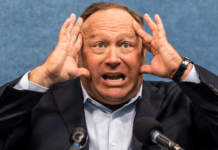Incidents of identity theft held fairly steady last year, according to a new report by Javelin Strategy and Research. It would seem with time-honored methods of ripping people off going the way of Bonnie and Clyde, fraudsters — ever sophisticated, creative and persistent — scrambled to find new ways to increase revenues in 2015. Of course, they did. They always do.
If I could drive one point home after reading the latest Javelin report, “2016 Identity Theft: Fraud Hits an Inflection Point,” published this week, it would be that identity theft continues to be a blight on the lives of millions of Americans.
Now say it with me: “It’s just a matter of time.”
The cardinal rule of the identity theft quagmire is simply that, sooner or later, every last one of us will get got. No exceptions.
Regardless of statistics suggesting a plateau in the number of identity-related crimes, there is still nowhere to run or hide from the scammers, phishers and identity thieves who view us as their day job. Think of the war on identity theft (or the unending assaults upon us by identity thieves) as being a never-ending round of whack-a-mole. Contain it here; it pops up over there. According to the report, “the total number of victims remained steady at 13.1 million, and the total fraud amount fell slightly to $15 billion. However, that stability masks major changes in fraud in the U.S.”
The total number of victims last year was at its second highest level in the last six years. Since we’re in the middle of an identity theft pandemic, second place should still be worrisome (just ask Donald Trump). While identity theft is a fact of life—I would argue the third certainty right up there with death and taxes—it is imperative that none of us be lulled into a false sense of security in what might be mistaken for a “new normal.” Only in movies like the Resident Evil series does mayhem and villainy predicate all aspects of reality. We’re still in the here and now of a vicious crime trend, and it’s nothing we can’t handle.
What Me Worry?
One of the reasons it is imperative to stay on the alert is the way identity theft is evolving. The latest statistics reveal new twists in the evolution of this now-entrenched crime wave. While on the surface, there’s the good (well, not really that good) news — there were roughly as many victims in 2015 as the year before, and they stole a tad less — there is way more to the story. The area of concern is a 113 percent increase in new account fraud and a big jump in card-not-present transaction fraud.
With the introduction of EMV, or chip and PIN (or — in America — chip and signature) technology, it has become harder for fraudsters to counterfeit cards. The criminal response to this seems to be a shift to the creation of new accounts using Social Security numbers and other personal information readily available online — data that sometimes comes via the social media posts of millions of Americans who over-share information that fraudsters can use to create a new account, but more often comes via black market websites that sell information lost in data breaches.
Another Important Finding
The Javelin study also found that distrust of financial institutions, specifically a failure to take advantage of services like transaction monitoring, email alerts, credit freezes and black-market monitoring creates new challenges. As a result, information is being “used for 75 percent longer by fraudsters and incurring a 185 percent greater mean consumer expense than those victims that have high trust in their financial institutions.”
These two changes need to be addressed, specifically in the way you manage your identity portfolio — keeping it safe from evil-doers.
In my book Swiped: How to Protect Yourself in a World Full of Scammers, Phishers, and Identity Thieves, I provide a practical approach to the reality of identity theft. It’s called the Three Ms, which are: 1.) Minimize your risk of exposure, 2.) Monitor your accounts and 3.) Manage the damage.
The goal (indeed the imperative) is to reduce your attackable surface and make yourself a harder target. When the inevitable happens, you need to know you have a problem as quickly as possible and what to do or to whom to go to in order to put yourself back together again. Keeping an eye on your credit reports and scores are two ways to monitor your identity. You can check your credit reports for signs of identity theft (i.e. new accounts you didn’t open) for free once a year on AnnualCreditReport.com. You can track your credit scores for free every month on Credit.com.
That said, when it comes to new account fraud, you can’t simply rely on an annual free credit report and self-help. You should really seek help from a professional — oftentimes it is available for free as a perk of your relationship with a financial services institution or your insurance company.
At the very minimum, if you know your information has been involved in a data breach, regardless of the solution presented by the breached organization (for which you should sign up because it’s free and more monitoring is better than no monitoring) it’s probably a good idea you freeze your credit and become far more sensitive to notices you receive, calls you field or e-mails that ask you to click on a link or provide any information.
Penny-wise and pound foolish doesn’t even begin to describe how you will feel if you trust fate over institutions, because the day will come when a debt collector calls looking for money you never spent, and all the Monday morning quarterbacking in the world won’t settle those accounts.










